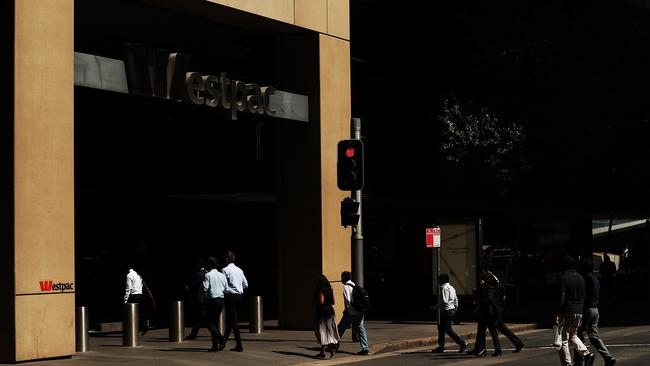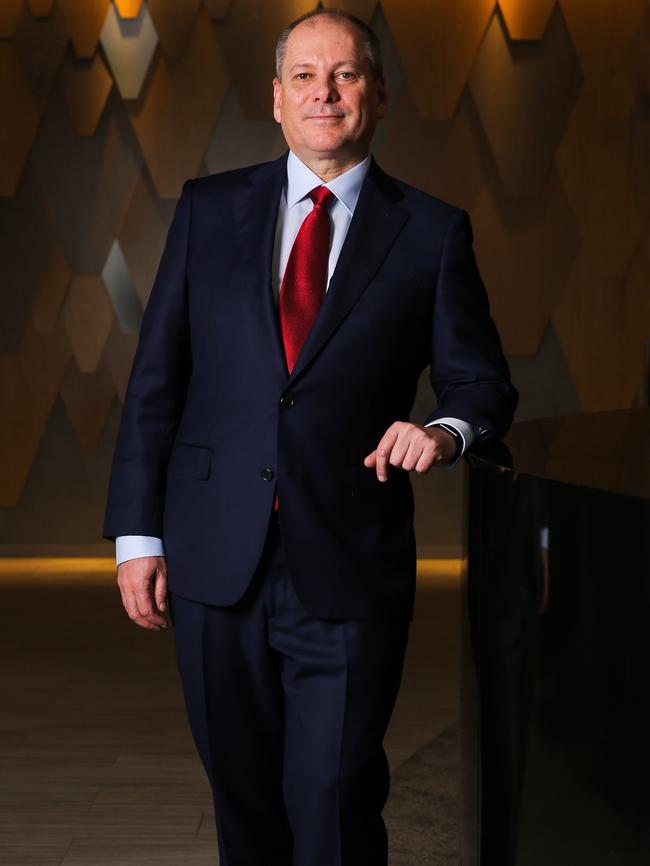Tyro in frame with Westpac now on hunt for acquisitions
Westpac has turned its attention to potential acquisitions, including listed group Tyro, as it starts to again focus on future growth levers following a divestment spree.

Westpac has turned its attention to potential acquisitions, including listed group Tyro, as it starts to again focus on future growth levers following a divestment spree that has so far seen the bank complete seven business exits.
After confirming to investors last month Westpac was in early talks to buy merchant terminal group Tyro, chief executive Peter King on Monday was asked to explain his rationale, given the target is losing money.
“When we are focusing on the banks, we think payments is important. In the institutional bank we’re investing in the infrastructure that supports the bank, including using the 10x capability, and we’re looking at other options that can improve the offering to business customers around payments,” he said. “That’s the strategic thinking.
“Because we’re simplifying the portfolio, we’ve got more ability to look forward.”
Westpac’s profit results presentation indicated it has completed seven business exits, while two divestments have been agreed to and are awaiting finalisation.
One of those is the sale of Westpac’s superannuation funds and Advance Asset Management business to Mercer Australia.
The bank is still pursuing the sale of its Pacific division, after a sale was blocked last year by Papua New Guinea’s regulators.
On the potential sale of Westpac’s investment platform business, Mr King said negotiations were progressing, although the bank was not targeting a specific timeframe for deal announcement. “We don’t control everything in terms of timing – it’s the counterparty,” he added.
“It’s got to be a transaction that makes sense. I would have loved to have it done by now … we’ve just got to work through it.”

Mr King said if a sale was agreed to that would be followed by a “long transition period”.
Westpac’s common equity tier-one capital ratio stands at 11.29 per cent, down from 11.33 six months earlier. The bank on Monday said it would issue shares for its dividend reinvestment plan.
Westpac’s earnings results did show some momentum in its business units in the latter half of the year, although some divisions performed better than others.
The consumer banking unit – its largest – saw cash earnings decline 11 per cent but core earnings decreased 4 per cent for the year. Net loans were 3 per cent higher at $11.9bn, underpinned by a rise in owner-occupied mortgages.
Mr King said Westpac had returned to growth in its key segments of Australian mortgages and business lending. He highlighted that the bank had returned its mortgage book growth to rates seen by its major rivals as it fixed issues that led to longer approval times.
Mr King noted, though, that Westpac had “more work to do” on investor mortgages. Deposits in the consumer division increased 5 per cent to $14.2bn.
The business banking arm saw cash earnings decline 15 per cent but Westpac said core earnings rose. Net loans were $6.5bn, or up 8 per cent, with the bank reporting growth across most sectors.
As a percentage of total committed exposures, the accommodation restaurant and cafe sector had the greatest proportion of stress, followed by the construction industry.
Westpac’s New Zealand division saw annual cash earnings rise 15 per cent, while the group’s institutional bank posted cash earnings that were $1.2bn higher, given an absence of notable items through the year. The bank’s overall return-on-equity printed at 9.3 per cent for the year ended September 30, with Mr King saying that metric was “not where” Westpac wanted it to be.
Separately, the bank released its annual report which showed Mr King’s pay was $5m in its 2022 year, up from $4.2m.
The increase was buoyed by a rise in his short-term cash award. The report showed Mr King was granted $1.8m of his maximum short-term variable cash award of $3.75m.
Westpac added Australian commercial real estate to its climate and emission reduction targets, after earlier outlining four industries and specific targeted cuts to its financed emissions.






To join the conversation, please log in. Don't have an account? Register
Join the conversation, you are commenting as Logout